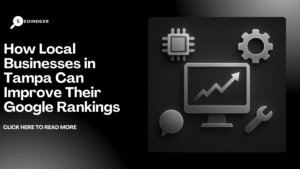How to Structure Content for Answer Engine Optimization (AEO)
In the evolving world of digital marketing, traditional SEO (Search Engine Optimization) is no longer enough. The rise of voice assistants and search engine algorithms focused on semantic search have shifted the focus toward Answer Engine Optimization (AEO). AEO is all about crafting content that directly answers user queries — and does so in ways that appeal to the algorithms of answer engines like Google Assistant, Siri, Alexa, and even emerging AI-driven bots powered by ChatGPT and Bard.
This blog dives deep into how to structure content for AEO in 2024 and beyond. Whether you’re an SEO professional, digital marketer, business owner, or blogger, understanding AEO can drastically improve your visibility in featured snippets, voice search, and zero-click search results.
Table of Contents
ToggleWhat is Answer Engine Optimization?
Answer Engine Optimization (AEO) refers to the practice of optimizing content so that it can be easily understood and pulled by search engines and digital assistants to directly answer user questions. It focuses on providing structured, concise, and value-packed information that satisfies search intent quickly and efficiently.
Search engines are shifting from keyword-based ranking systems to intent-based and context-rich answers. With the rise of voice search and mobile assistants, users now expect immediate and accurate answers — usually in the form of a single snippet or spoken response. Hence, structuring your content for these enhanced results is the essence of AEO.
Why Is AEO Important?
- Voice Search Optimization: Over 58% of consumers use voice search to find local business information. Voice assistants rely on AEO-style content to provide quick answers.
- Featured Snippets: Appearing in a Google featured snippet can drastically increase your visibility and drive more traffic.
- Zero-Click Searches: These occur when users get their answers directly on the search engine results page (SERP) without clicking through. Structuring your content for this format ensures your brand is still visible.
- User Trust: Providing concise, authoritative answers positions you as a subject matter expert.
- AI and Chatbot Integration: Optimized content can easily be used by AI-Powered tools such as ChatGPT, Bing Chat, or Bard, increasing content reach and usage.
Core Elements of Structuring Content for AEO
1. Understand Search Intent
Everything starts with user intent. Users might want to:
- Know: Looking for information (informational query).
- Go: Navigating to a website or location (navigational query).
- Do: Trying to perform an action — buy, download, sign up (transactional query).
- Compare: Searching to make decisions (investigative query).
Use keyword tools (like SEMrush, Ahrefs, Google Keyword Planner) and AI tools to analyze and understand the intent behind queries. Tools like AlsoAsked.com and AnswerThePublic.com can help derive question-based keywords and follow-up queries people ask.
2. Use Questions as Headings (H2, H3)
Structuring your content with question-based headers has a direct impact on AEO. This helps Google and voice assistants find the exact match to search queries. Use H2 and H3 tags for such questions and provide brief and accurate answers beneath them.
Example:
How does Answer Engine Optimization differ from SEO?
Answer Engine Optimization focuses on answering specific user questions concisely and accurately, often in the form of featured snippets and voice responses, whereas traditional SEO focuses on keyword rankings and organic visibility.
3. Use Concise, Direct Answers (30–50 Words)
Google’s featured snippets typically display answers that are under 50 words. When answering a question, use clear formatting — bullet points or short paragraphs — with simple language. Sentence structure also matters; write answers as if explaining to a 9th grader. Avoid jargon unless necessary.
4. Leverage Schema Markup
Use schema.org structured data to help search engines crawl, understand, and display your content. Some key schema types for AEO include:
- FAQPage: For question-and-answer format pages with multiple FAQs.
- HowTo: For instructional and process-related content.
- Article: Helps define editorial, news, or blog article content.
- Breadcrumb: Helps engines understand site hierarchy and improves navigation.
To implement schema, use Google’s Structured Data Markup Helper or plugins like Rank Math and Yoast SEO on WordPress.
5. Optimize for Voice Search
Voice assistants are powered by NLP (Natural Language Processing) to identify user questions. Best practices include:
- Use conversational language in content.
- Integrate long-tail keywords that mirror how people speak.
- Create FAQs and “People Also Ask” inspired sections.
- Answer the 5Ws + H (Who, What, When, Where, Why, How).
Use tools like Google’s Search Console, Answer the Public, and SEMrush’s Voice Search Optimization checker to monitor how your content performs in voice-related queries.
6. Include a Dedicated FAQ Section
Adding a FAQ section towards the end of your posts or product pages is highly effective for AEO. Search engines love this structured set of questions and answers, and they often feature such content in People Also Ask or voice search results.
7. Use Tables, Lists, and Steps
Structured formatting increases your chances to be featured in “list-type” snippets. Use:
- Numbered lists for How-To content.
- Bulleted lists for feature comparison or alternatives.
- Tables to show data, pros & cons, pricing tiers, etc.
Example:
Steps to Optimize for AEO
-
- Identify user intent using keyword research tools.
-
- Structure content using question-based headers.
-
- Provide short and accurate answers.
-
- Implement schema markup using JSON-LD.
-
- Write naturally for voice search compatibility.
8. Keep Content Fresh and Updated
AEO is time-sensitive. Question-based queries often reflect the latest information needs. Ensure content is updated regularly, especially content based on statistics, trends, and changing policies. Google often prioritizes “fresh” content for informational queries.
9. Establish Topical Authority
To become a trusted answer source, you must demonstrate expertise in your niche. This includes:
- Creating content clusters around pillar topics.
- Internal linking across related pages.
- Getting high-authority backlinks.
- Having an author profile that showcases credibility (use E-E-A-T principles: Experience, Expertise, Authoritativeness, Trustworthiness)
10. Monitor and Analyze Performance
Use performance tools to analyze what is being picked as a featured snippet and what’s not. Tools include:
- Google Search Console
- SEMRush (Featured Snippet Reports)
- AHREFs (SERP Feature Tracker)
- Surfer SEO/Frase.io for AEO content optimization
Practical Content Template for AEO
Here’s an outline or structure you can use while writing content optimized for AEO:
- Title with a Keyword-Optimized Question
- Introduction Paragraph: Brief explanation of the topic (40-50 words)
- Question-based H2 tag: Primary queries
- Short answers under 50 words
- Related Follow-up Questions: H3 tags and answers
- FAQ Section: 4-6 Internet-searched FAQs
- Schema Markup Implementation: Add appropriate JSON-LD or plugin-based schema
FAQ – Answer Engine Optimization
What are examples of answer engines?
Common answer engines include Google Search (Featured Snippets), Google Assistant, Siri, Bing (and Bing Chat), Amazon Alexa, and AI chatbots like ChatGPT or Bard.





